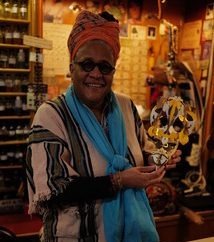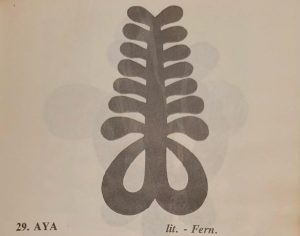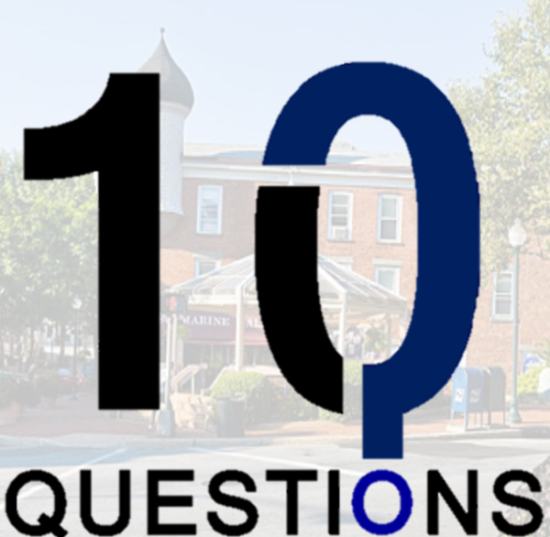Editor’s Note: The Peekskill Herald’s “10 questions …”, column is for readers to know more about those who work in city government, own businesses, and support our city’s development. Today’s column features LaFern Joseph, owner of The Fern Tree.
Tell us about how you rooted in Peekskill — when did you arrive, what brought you here?
I came to Peekskill in 1989 because of a job offer from Phoenix House. At that time, I was living in Brooklyn and felt the need for a change. Peekskill seemed like a peaceful and welcoming place to start a new chapter in my life. The opportunity to work with Phoenix House in such a wonderful setting was an offer I couldn’t refuse. The calm atmosphere and the promising future of Peekskill attracted me, making it an ideal place to live and thrive.

How do you select what items to feature in The Fern Tree?
At The Fern Tree, I carefully curate items based on customer demand and preferences. Most of the products I offer are specifically requested by my customers. I prioritize stocking all-natural products such as Shea butter, oils, organic soaps, and specialty soaps, due to their high demand. Additionally, traditional African clothing items are popular not only for their style but also for their comfort. It brings me joy to fulfill the wishes of my customers by consistently providing these sought-after items at The Fern Tree. I am dedicated to maintaining a diverse selection that meets the needs and desires of my valued customers.
What’s the best thing about your job, what’s your biggest challenge?
The best thing about my job here at The Fern Tree is meeting great people every day, especially the old customers who always come by. The gratification I get from fulfilling my customers’ needs is truly rewarding. However, my biggest challenge in downtown is the lack of parking space and the inflated economy. The rising cost of living has made it difficult to sustain my business, but I have made a conscious effort not to increase my prices to accommodate my loyal customers. Balancing these challenges with the joys of interacting with amazing people makes my job both fulfilling and demanding.
You have been running the Peekskill Underground Railroad Tours for more than 25 years — how did you come to lead these tours? What was Peekskill’s role in the Underground Railroad?
I began the Underground Railroad Tours 30 years ago with my husband in Peekskill, inspired by the Million Women’s March in 1997. Encouraged by the elders, who shared stories of abolitionists like Hawley Green and Henry Ward Beecher, we felt compelled to preserve this vital history. The underground railroad passed through Peekskill, and we were determined to honor its legacy. Our tours aim to educate and celebrate the bravery of those who fought for freedom. Join us in exploring the rich history of our community and keeping the spirit of the underground railroad alive in Peekskill.

Recently, the artist Carlos Jefferson painted a mural of Harriet Tubman on the side of The Fern Tree Building — how did this come about? What was your role, if any, in choosing this mural? How does it make you feel for this mural to be housed at The Fern Tree?

The mural of Harriet Tubman on my wall came about through a beautiful collaboration. The idea originated from Larry D’Amico and the Peekskill Arts Alliance, and he played a crucial role in bringing it to life. Working with the talented African American painter, Carlos Jefferson, the mural now adorns our building, showcasing the strength and endurance of Harriet Tubman’s legacy. Our decision to incorporate Adinkra symbols from the Ashanti people of Ghana adds a deeper layer of meaning, symbolizing strength, endurance, steadfastness, humility, and the divine. I feel both honored and humbled to have been a part of this project, witnessing a powerful representation of history and culture grace my wall. May it be an inspiration to all especially our youth.
How do the city’s development plans (e.g. the recent Downtown Revitalization Initiative funding) affect your business and the downtown in general?
The city’s plans developed with DRI grant funding are set to positively impact businesses in downtown. By utilizing the grant money, the city is implementing various projects such as refurbishing buildings. These changes are aimed at enhancing the overall appeal of downtown, benefiting not only property owners like myself but also the entire community. With these improvements, it is expected that the city will see an uplift in its economic landscape, attracting more visitors and shoppers to the downtown area. The collaborative efforts funded by the DRI grant will likely contribute to the growth and prosperity of businesses in the downtown area, ensuring a vibrant and thriving business environment for all stakeholders involved like me.
How did the pandemic change your business?
The pandemic had a profound impact on my business. The business I made saw a significant decline in sales, leading to a loss of income. In response, I had to make difficult decisions to stay afloat, including changing my business hours and services. Unfortunately, these changes disrupted my service. Despite the challenges, I am hopeful that with perseverance and adaptation, I can navigate through these tough times and emerge stronger on the other side.
You’re a quilter — how long have you been quilting? What draws you to this art form? Do you feature any particular imagery in your quilts? Did you draw inspiration from visual artist and quilter Faith Ringgold?
Quilting has always been my passion and source of inspiration. For the past 20 years, I have poured my heart into creating quilts that tell stories of resilience and freedom. The underground railroad signals have long captivated me, serving as symbols of hope and liberation in my work. Drawing from the rich history of the underground railroad, my quilts echo the strength and determination of those who sought freedom against all odds. In my creative journey, I have found inspiration in the powerful storytelling of artists like Faith Ringgold, whose work continues to motivate me to push boundaries and explore new avenues in quilting. “Quilting in my inspirations” encapsulates the essence of my craft, weaving together history, art, and my deep-rooted passion for creating meaningful pieces that resonate with viewers.
Where is your favorite place to go in Peekskill, and why?
My favorite place to be in Peekskill is the Bean Runner. It is inviting to all, friendly, and the food is always fresh and delicious. The entertainment is always excellent, and there are many events. Whether I’m enjoying a meal or watching a performance, the Bean Runner never fails to provide a welcoming and enjoyable experience for me.
What would you like to say to the Peekskill community?
To the Peekskill community, I would like to express my deepest gratitude for welcoming and embracing a unique business like mine when I first arrived. Peekskill has not only been a place for me to grow my business but also a warm and supportive community where I could raise my sons and forge lifelong friendships. Your acceptance and support have meant the world to me, and I am truly thankful for being a part of this wonderful community. Thank you for making Peekskill such a special place for me and my family.
The Fern Tree is located at 13 S. Division St., Peekskill and is open Thursday-Saturday, 12-6 p.m.



